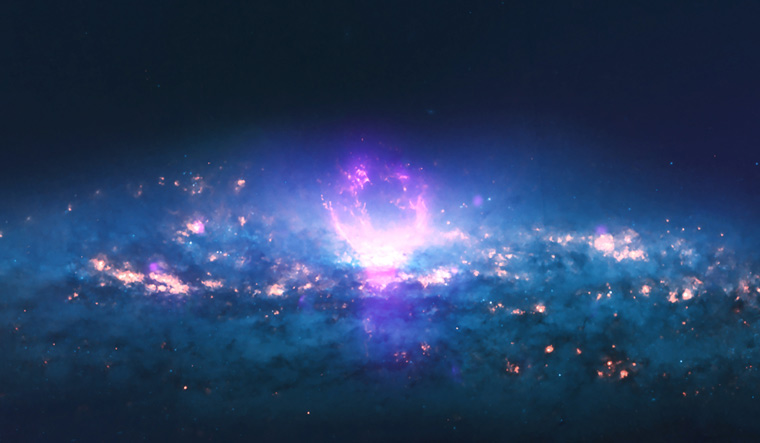For over a decade, scientists have speculated that approximately one out of every three massive stars undergoes the process of losing their hydrogen envelope in binary systems. However, until now, only one potential candidate had been identified, leaving a significant gap in our understanding of these celestial phenomena.
Astronomers from the University of Toronto have made an extraordinary discovery, revealing a hidden population of massive stars stripped of their hydrogen envelopes by their companions in binary systems. This groundbreaking finding, published in the prestigious journal Science, not only sheds light on the enigmatic hot helium stars, but also provides crucial insights into the origins of hydrogen-poor core-collapse supernovae and neutron star mergers.
Co-lead author Maria Drout, an Assistant Professor at the University of Toronto's David A. Dunlap Department of Astronomy & Astrophysics, describes this discovery as an essential piece of the cosmic puzzle. She explains, "If these stars were rare, it would mean that our theoretical framework for various phenomena, such as supernovae, gravitational waves, and the light from distant galaxies, is fundamentally flawed. This finding confirms that these stars do indeed exist."
The newfound knowledge about binary stripped stars will enable astronomers to delve deeper into the intricacies of these celestial bodies. "We can now conduct more detailed scientific investigations on these stars," says Drout. "For instance, our ability to measure the material expelled from these stars in stellar winds will provide valuable insights into predictions regarding the number of neutron star mergers we should expect to observe."
These stripped stars have long intrigued researchers as they may hold the key to understanding why a significant proportion of core-collapse supernovae lack sufficient hydrogen, unlike the typical explosions of Red Supergiant stars. Drout and her colleagues propose that these newly discovered stars are likely to culminate in hydrogen-poor supernovae. Moreover, they are believed to play a crucial role in the formation of neutron star mergers, the same mergers that emit gravitational waves detected by the LIGO experiment here on Earth.
Interestingly, the researchers suspect that a few objects within their current sample are stripped stars with companions in the form of neutron stars or black holes. These objects are on the precipice of becoming double neutron star systems or systems combining neutron stars and black holes, which could eventually merge.
Bethany Ludwig, a PhD student at the University of Toronto's David A. Dunlap Department of Astronomy & Astrophysics and co-author of the study, likens these cosmic phenomena to a grand celestial dance. Ludwig says, "Stars, especially massive ones, are rarely solitary giants. They engage in a dynamic partnership, influencing and interacting with each other throughout their lifetimes. Our work illuminates these captivating relationships, revealing a universe that is far more interconnected and active than we previously imagined."
As stars evolve and transform into red giants, the gravitational pull of their companions can strip away their outer hydrogen layers, exposing a blazingly hot helium core. This intricate process can take tens or even hundreds of thousands of years to complete.
Detecting stripped stars poses a challenge as much of the light they emit lies beyond the visible spectrum, often obstructed by interstellar dust or overshadowed by their companion stars.


